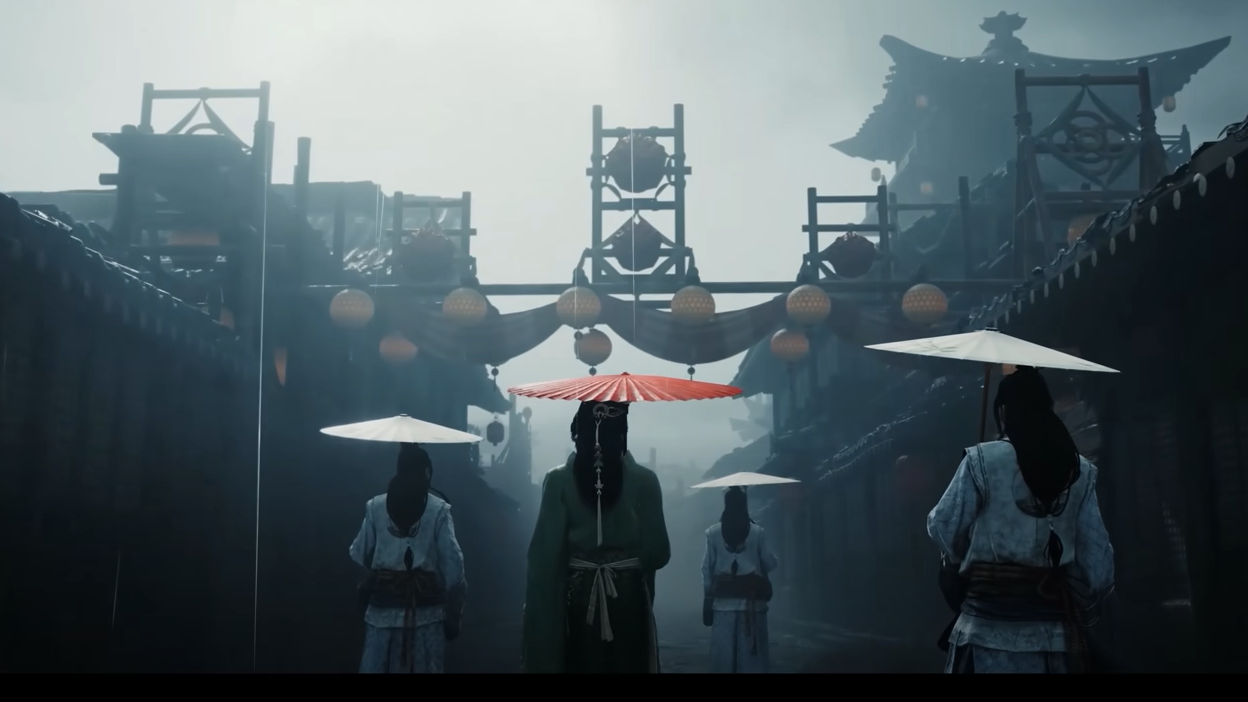Vitality in Where Winds Meet looks simple at first glance – a white circle on your Mystic Skills HUD – but it quietly controls when you can actually use many of the game’s flashiest abilities. If you’ve just unlocked something like Honking Havoc or Blinding Mist and the game says you don’t have enough Vitality, you’re bumping into one of the game’s hidden progression gates.
What Vitality actually is in Where Winds Meet
Vitality is a dedicated resource used only for Mystic Skills of the Offensive and some Support types. It shows up as a small white ring inside the Mystic Skills radial HUD on the right side of the screen.
A few key traits define how it works:
- Each Mystic Art has a Vitality cost. High‑impact skills (large AoE, strong crowd control, or powerful support like Blinding Mist) often require much more Vitality than you start with.
- Vitality is separate from Qi, Endurance, and Insight. It only governs Mystic Skills, not Martial Arts combos, dodges, or parries.
- Vitality is intentionally limited early on. Some skills you unlock will list costs (60, 80, etc.) above your current maximum, signaling that you’re meant to come back later, not use them immediately.

How Vitality is restored during play
Restoring Vitality is not about potions or passive regen; it’s about staying aggressive and touching specific world objects.
| Action | Effect on Vitality | When it matters most |
|---|---|---|
| Landing repeated hits on enemies | Gradually refills Vitality over time | Long fights, boss battles, mob clearing |
| Taking combat actions (sustained engagement) | Helps keep Vitality flowing back in between casts | When cycling multiple Mystic Skills in one encounter |
| Standing near a Boundary Stone | Rapidly restores Vitality | Before major fights, after a tough encounter |
Vitality restoration is designed to prevent spamming high‑tier skills on cooldown. You’re encouraged to weave Mystic Arts into your attack strings and use them at decisive moments rather than as a primary damage loop.
How to increase maximum Vitality
Max Vitality doesn’t scale off character level or gear rarity. It increases through a specific progression loop tied to exploration and collectibles.
Melodies of Peace and Oddities
Max Vitality upgrades are bought with “Melodies of Peace,” a system that turns world exploration into permanent stat boosts. The flow looks like this:
- You collect Oddities in the open world – items like beehives, miasma flowers, and other curiosities.
- Certain NPCs let you turn those Oddities into permanent passive upgrades, including Vitality increases.
- Each upgrade node adds a fixed chunk of Vitality. Early on, this is enough to reach thresholds like 60 Vitality. Later, you’ll need more nodes – and eventually more than one vendor – to hit 80 or higher.
Players typically encounter the first Vitality‑upgrade NPC in the early Qinghe region:
| NPC | Location hint | How to unlock upgrades |
|---|---|---|
| Melodies of Peace musician (first vendor) | Near the riverbank close to where you first meet the Wayfarer and see the bear using Tai Chi | Bring him a bee hive the first time; afterwards he accepts various Oddities for permanent passives |
| Second Melodies of Peace NPC | Further south on the map, reachable closer to endgame | Offers a similar upgrade tree, including more Vitality nodes |
From player reports and the upgrade tree structure:
- The first NPC’s tree provides enough Vitality to push a fresh character from roughly 40 to around 60–70 over time.
- To reach the highest Vitality requirements (for example, 80 for Blinding Mist), you need access to the second Melodies of Peace vendor later in the game.
Why some Mystic Arts demand so much Vitality
Not all Mystic Skills pull from Vitality, which is where a lot of confusion starts.
| Mystic Skill type | Consumes Vitality? | Examples | Design intent |
|---|---|---|---|
| Offensive | Yes | Tai Chi, Flaming Meteor, Honking Havoc, Blinding Mist, Golden Body | High‑impact, limited use tools for control, burst damage, or strong utility |
| Support (Offensive category) | Yes | Glow of Fireflies, Veil of Stillness, Ghostly Steps | Defensive and utility effects, often used to set up other skills |
| General Mystic Skills | No | Star Shift, Divine Counter, Touch of Death, Wind Sense | Core combat tools and passives that should always be available |
| Movement Mystic Skills | No | Threefold Skywalk, Skywalk Dash, Wallstride, Abyss Dive | Traversal and mobility tied to Exploration Level, not Vitality |
Skills with very high Vitality costs tend to:
- Offer powerful crowd control or lockdown (for example, Blinding Mist blinds and soft‑locks non‑mighty enemies for several seconds).
- Synergize with General Mystic Skills such as Touch of Death (Blinding Mist into Touch of Death is a designed combo window).
- Be balanced for mid‑to‑late game, when you’ve unlocked more Vitality upgrades.
That’s why it’s common to unlock a Mystic Art like Honking Havoc or Blinding Mist long before you can actually cast it. Unlocking the skill and meeting its Vitality requirement are two different progression tracks.
Inner Ways that interact with Vitality
Inner Ways (internal arts) add passive effects across different playstyles. A few of them are directly tied to Mystic Arts and Vitality.
| Inner Way | Type | Effect related to Vitality/Mystic Arts |
|---|---|---|
| Fury Harvest | General – Support, Mystic Arts, Recover | Vitality is required to cast Mystic Arts. Certain recovery actions have a 50% chance to grant 1 bonus Vitality. No bonus Vitality is gained from attacking, being hit, or deflecting. |
| Wind Beneath Wings | General – Support, Mystic Arts, Recover | Reduces the Endurance cost of Skywalk Dash while jumping, increases movement speed after landing, and restores bonus HP after defeating enemies; pairs well with Mystic mobility but does not alter Vitality directly. |
| Shadow Assault | General – Attack, Mystic Arts, Damage Boost | Extends the max range of the assassin Mystic Art Touch of Death’s ambush, increasing the tactical value of combo setups like Blinding Mist → Touch of Death. |
Fury Harvest is the standout pick if you’re building a playstyle that leans heavily on Mystic Arts:
- It doesn’t increase your maximum Vitality; that still comes from Melodies of Peace.
- It improves how quickly you can refill Vitality through recovery actions during fights.
- It explicitly ignores the usual combat sources of Vitality (attacks, hits taken, and deflections), emphasizing a different loop.
Why you feel “stuck” at 40 Vitality
Many players hit a familiar wall: they hover around 40 Vitality, then start unlocking Mystic Arts with 60–80 Vitality requirements. A few things are happening at once:
- The game hands out Mystic Arts early through quests, Skill Theft, and Sentient Being interactions, even when you’re under the Vitality threshold.
- Melodies of Peace, Oddities, and the first musician NPC are easy to overlook; the game doesn’t aggressively funnel you into that system.
- The first upgrade NPC does not provide enough Vitality alone to meet the highest requirement skills; the second NPC on the lower map finishes the curve, and that location is effectively endgame.
The result: you can earn Blinding Mist in Qinghe via “Blinded by Mortalbound,” see that it needs 80 Vitality, and still not be able to cast it even after clearing the first vendor’s tree. That isn’t a bug; it’s a deliberate pacing choice that ties the strongest Mystic setups to long‑term exploration and Oddity hunting across the full map.

Practical progression path for Vitality
To avoid sitting on unusable Mystic Arts for too long, it helps to treat Vitality as its own track alongside level, weapons, and Inner Ways.
| Stage | What to focus on | Vitality outcome |
|---|---|---|
| Early Qinghe (first hours) | Follow main story, unlock core Mystic Skills, find the disheveled musician near the river, turn in a bee hive, start trading Oddities. | Move beyond the base ~40 Vitality, enough to use mid‑tier Mystic Arts that ask for ~50–60. |
| Midgame exploration | Actively farm Oddities (beehives, miasma flowers, etc.), revisit the Melodies of Peace vendor to fill out his tree. | Reach thresholds to comfortably use most Offensive Mystic Arts you’ve unlocked so far. |
| Late game / southern regions | Push deeper into lower‑map areas, locate the second Melodies of Peace NPC, keep handing in Oddities. | Unlock the final Vitality nodes needed for 80‑cost Mystic Arts like Blinding Mist. |
Along the way, slot an Inner Way like Fury Harvest if you want more frequent Mystic casts, and periodically re‑evaluate your HUD layout: keep high‑cost Mystic Arts on your primary row only once you can actually fuel them, and park puzzle‑only skills (Tai Chi, Meridian Touch, Celestial Seize) on a second row for exploration.
Vitality in Where Winds Meet isn’t just another bar to fill; it quietly controls the rhythm of your most dramatic combat tools. Treat Melodies of Peace and Oddities as core progression, not side flavor, and the high‑cost Mystic Arts that looked unusable at 40 Vitality will eventually become the centerpiece of your kit.


